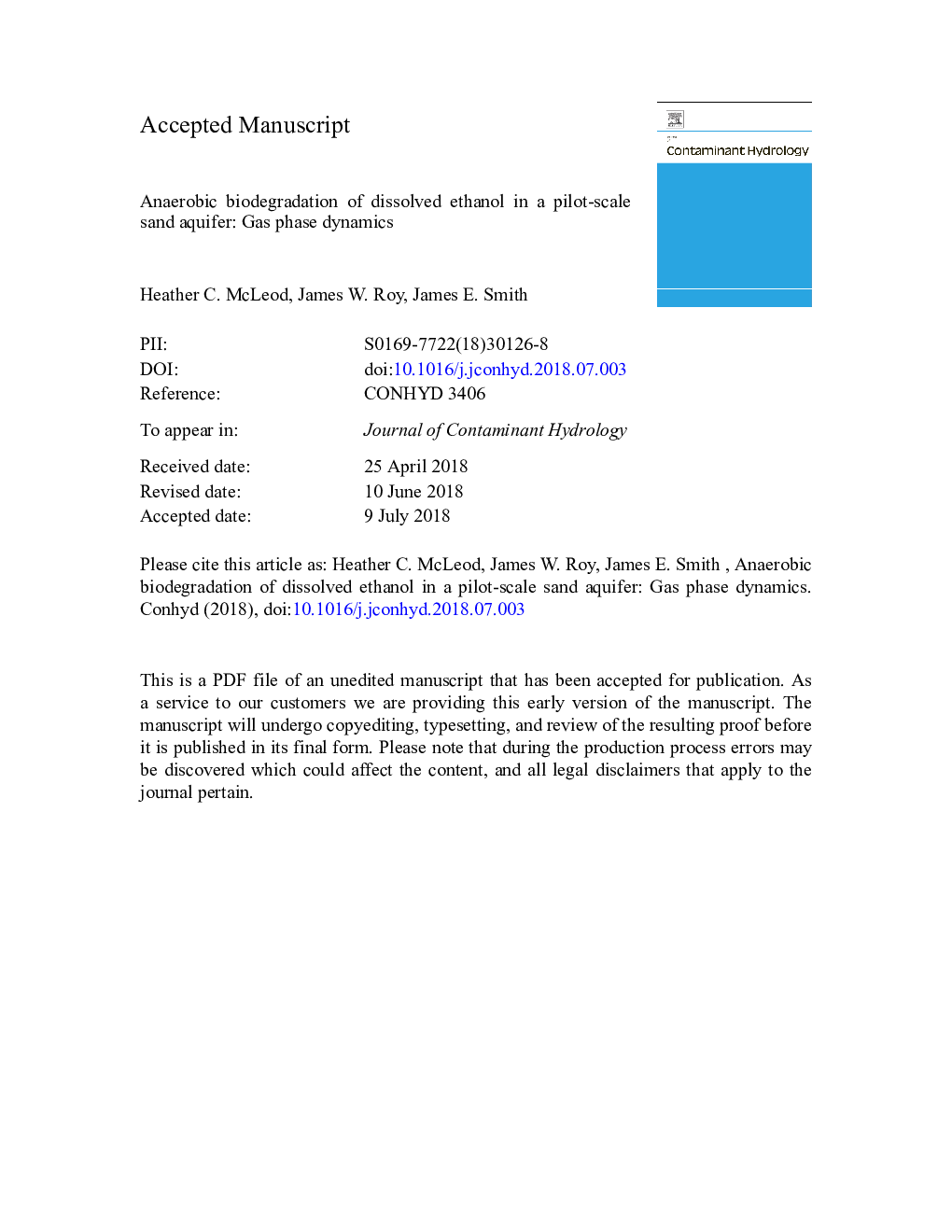| کد مقاله | کد نشریه | سال انتشار | مقاله انگلیسی | نسخه تمام متن |
|---|---|---|---|---|
| 8885782 | 1626996 | 2018 | 41 صفحه PDF | دانلود رایگان |
عنوان انگلیسی مقاله ISI
Anaerobic biodegradation of dissolved ethanol in a pilot-scale sand aquifer: Gas phase dynamics
ترجمه فارسی عنوان
تجزیه بیولوژیکی بیوانفوریت اتانول محلول در آبخوان شن و ماسه خلبان: دینامیک فاز
دانلود مقاله + سفارش ترجمه
دانلود مقاله ISI انگلیسی
رایگان برای ایرانیان
کلمات کلیدی
اتانول، گازوکول، آب های زیرزمینی، گاز گیر کرده، تجزیه زیستی، اپیلاسیون،
موضوعات مرتبط
مهندسی و علوم پایه
علوم زمین و سیارات
فرآیندهای سطح زمین
چکیده انگلیسی
Groundwater contamination from ethanol (e.g., alternative fuels) can support vigorous biodegradation, with many possible reactions producing dissolved gases. The objective of this study was to improve the understanding of the development and evolution of trapped gas phase changes occurring within an ethanol plume undergoing biodegradation. The experiment performed involved highly detailed spatial and temporal monitoring of gas phase saturations using Time Domain Reflectometry probes embedded in a 2-dimensional (175â¯cm highâ¯Ãâ¯525â¯cm long) synthetic aquifer (homogeneous sand tank with horizontal groundwater flow). Ethanol injection immediately promoted gas-producing reactions, including: fermentation, denitrification, sulphate-reduction and iron(III)-reduction, with methanogenesis developing between 69 and 109â¯days. Substantial in situ increases in trapped gas were observed over ~330â¯days, with maximum gas saturations reaching 27% of the pore volume. Despite sustained gas production, this maximum was never exceeded, likely due to the onset of gas phase mobilization (i.e., ebullition) upon reaching a buoyancy-capillarity threshold. Reductions in the quasi-saturated hydraulic conductivity, resulting from the gas phase accumulation, were restricted by ebullition to a factor of â¤2; but still appeared to alter the groundwater flow field. Overall, trapped gas saturations exhibited high spatial and temporal variability, including declines within the plume and increases outside of the plume. Influential factors included vertically-shifting ethanol inputs and resultant secondary redox reactions, microbial controls on redox zonation, ebullition, and altered groundwater flows. These observations have implications for the transport of gases and volatile compounds within plumes and above the water table at sites with groundwater contamination from ethanol or other highly degradable organics.
ناشر
Database: Elsevier - ScienceDirect (ساینس دایرکت)
Journal: Journal of Contaminant Hydrology - Volume 215, August 2018, Pages 62-72
Journal: Journal of Contaminant Hydrology - Volume 215, August 2018, Pages 62-72
نویسندگان
Heather C. McLeod, James W. Roy, James E. Smith,
